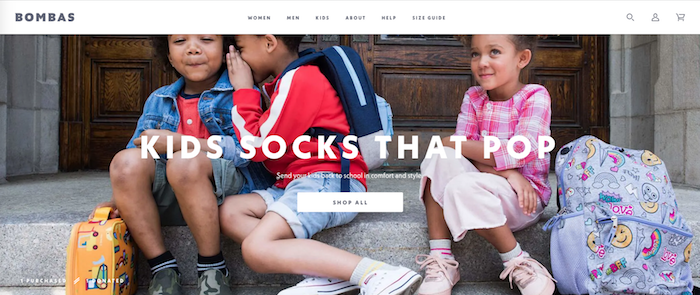Automating Ecommerce Operations, Marketing, and Customer Service on Shopify Plus

Blenders Eyewear sells their popular sunglasses on Shopify Plus
Consider this: As an ecommerce retailer, your operations team completes numerous behind-the-scenes tasks every day. These tasks include things like sending out a special thank you note to high-volume buyers. Or flagging suspicious orders. Now let’s suppose that each one of these tasks takes 30 seconds. Across the team, people complete 50 of these tasks every day. That equals 1500 seconds – a.k.a. 25 hours of time. Assuming your online business runs 365 days a year, this becomes 9,125 hours over the course of a year! For retailers on Shopify Plus, ecommerce automation can give you back these hours.
This quick visualization illustrates why automation is so valuable to a retailer’s bottom line. Thankfully, Shopify is keenly aware of these benefits. They offer retailers on Shopify Plus excellent automation tools through Shopify Scripts and Shopify Flow. Let’s take a look.

Marketing and Customer Service Automation: Shopify Scripts
In Shopify’s own words, Shopify Scripts are “small pieces of code that let you create personalized experiences for your customers in their cart and at checkout.” This means that retailers can use Shopify Scripts to modify the checkout experience and make it better for your shoppers.
Let’s say you want to offer tiered discounts by spending threshold. If someone spends $100, they get 10% off. If they spend $200, they get 20% off and so on. This kind of sale encourages people to add more to their cart in order to get a higher discount. With Shopify Scripts, you can set this up on the backend, so the discount is calculated as the customer adds products to the cart.
As a result, people immediately see what level of discount is available now, rather than having to wait until checkout or go searching for a coupon code. This means that they’re still on the product page as they see the discount. If they want to qualify for a higher amount, they have all of your products in front of them to reach the next threshold.
As another example, Scripts helps merchants assist customers in using more than one discount at a time. (Historically-speaking, this has been a tricky thing to accomplish on Shopify.) Suppose you have a loyal customer who wants to use a 20% coupon you sent out via email. At the same time, this person has a $50 gift certificate to redeem on your site. Scripts can be set up to facilitate both of these items, so your customers can be rewarded with all their offers.
Best yet, when your promotional campaign is done, all you have to do is turn off the script.
Shopify Scripts is great for embedding little conveniences into your online checkout. In turn, these small details create big ways to encourage your customers to convert and buy more.
Marketing and Customer Service Automation: Shopify Flow
Whereas Shopify Scripts are bits of code to embed into your site, Shopify Flow is a feature native to Shopify Plus. Flow exists to help merchants automate tasks on the backend of your ecommerce site. Within Flow, you create workflows based on three things: triggers, conditions, and actions.
For example, you can set up Flow to automatically email customers who spent $500+ in your store last year a coupon one week before their birthday. (Assuming you’ve asked them to submit their birthday information to make them eligible.) The trigger is that they spent $500, the condition is their birthday is seven days away, and the action is to email them the coupon.
Think about it: what kind of processes would you like to put into place to help build customer loyalty? If you sell fashion and apparel, perhaps customers who purchase from your site three times are automatically invited to preview your upcoming collection. Or when someone makes their first purchase on your site, they receive a welcome email directly from you.
Keep in mind you can also set up Flow to create triggers from third-party apps. For example, if you use a user-generated content app, like Yopto, you could get notified by the app whenever someone shares a photo with a hashtag of your company name.
Or, considering a more difficult scenario, you can be notified if someone leaves a one-star product review. This would help you respond in a timely way. The possibilities for this kind of automation is limitless. To keep brainstorming, check out the Shopify blog for all their Flow examples.

Operations Automation #1: Creating Custom Shipping Options with Shopify Scripts
Returning to Scripts, another way to benefit from these bits of code is in the shipping and/or payment portion of your online checkout. For example, if you wanted to run a free promotion on one method of shipping only, e.g. ground shipping, then Scripts could be configured to present this specific offer to your shoppers.
Or perhaps you sell some products that are big and bulky, like unique furniture pieces. You have standard shipping rates for most projects, but with these special items, you need to do something different. Perhaps you need to add a shipping surcharge to these items to cover the extra labor and packaging required to mail them. No problem. With Scripts, you can assign surcharges to specific items and clearly communicate the extra fee to your customer.
Operations Automation #2: Managing Inventory with Shopify Flow
As we mentioned above, Shopify Plus comes with Flow to automate tasks. This can be super beneficial for your loyalty programs and marketing campaigns. Another way Flow sings is with your company’s backend operations.
Here’s a scenario for retailers: You have the good fortune of selling a very popular product on your ecommerce site. With this success, the last thing you want to do is slow down the stream of sales. In other words, you want to make sure this product stays in stock. With Flow, you can set up a workflow to be notified whenever your inventory hits below a certain amount that you determine.
As an example, suppose you sell a swimsuit that is flying out of the store in the months leading up to summer. You don’t want to run out of these suits. Thus, you create a workflow to be notified whenever you have less than 20 suits available for purchase. The trigger is the 20 pieces of inventory, the condition is when the amount gets below 20, and the action is to order new inventory from your supplier.
Another cool feature with Flow is you can set up workflows that coordinate with the other programs you use in your daily operations. Using the example above, your reorder notification could go to your operations manager via Slack, for instance. Shopify Plus gives you the flexibility to set up Flow in ways that work best for your organization.
Operations Automation #3: Fraud prevention with Shopify Flow
A common headache for ecommerce retailers is fraud prevention. For merchants on Shopify Plus, Flow can give you a powerful tool to combat dishonest orders. For example, you can set up a workflow that stops your fulfillment team from packaging orders from a certain domain name.
Here the trigger is an order, the condition is that it’s from notarealperson.biz (or whatever domain you decide), and the action is that the order is halted. As a result, someone on your team now has time to thoroughly investigate the order. Then they can decide whether it’s legitimately fraudulent or not. This is particularly useful for ecommerce merchants who use dropshipping.
Our goal is to provide a framework of all the different ways Shopify Plus merchants can use Shopify Scripts and Flow to automate your ecommerce operations, marketing, and customer service. Remember: this is just a beginning. The best uses of these tools are up to you – and your business needs.
Not only can these tools save you hours (days! years!) of time, they will let you return to the work you love. You’ll be freed from countless, tedious administrative tasks. Now you can get back to selling the products you believe in, connecting with customers, and growing your business in new and exciting ways.
